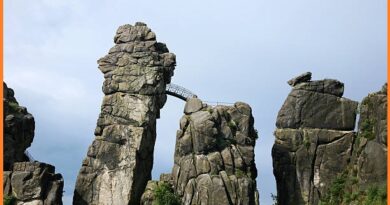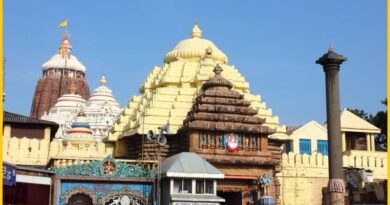A Super Fantasy Destination- Paro Taktsang Bhutan
Paro Taktsang
Paro Taktsang, also known as the Tiger’s Nest Monastery, is a Buddhist temple complex located in the Paro Valley in Bhutan. It is one of the most iconic landmarks in Bhutan and is a popular destination for tourists visiting the country. The monastery is located on a cliff, more than 3,000 meters above sea level, and offers stunning views of the surrounding mountains and valleys. The complex consists of four main temples, each of which is connected by a series of staircases and walkways.
The origin of the monastery dates back to the 8th century when Guru Rinpoche, a revered Buddhist master, is said to have flown to the site on the back of a tiger and meditated there for several months. Legend has it that Guru Rinpoche subdued a demon who was causing havoc in the area and converted the local people to Buddhism.
Today, Paro Taktsang Bhutan is an important pilgrimage site for Buddhists and a popular tourist attraction. Visitors must hike up to the monastery, which takes several hours, but the stunning views and the spiritual significance of the site make it well worth the effort. It is one of thirteen Tiger’s Nest caves in historical Tibet in which Padmasambhava practised and taught Vajrayana.
Paro Taktsang geology
The Paro Valley is located in the Himalayan Mountains, which are known for their unique geology. The valley is situated on a fault line, which has caused the area to be geologically active. This has led to the formation of steep cliffs, deep valleys, and rugged terrain, which is characteristic of the region. Steep cliff of The Tiger’s Nest monastery is composed of granitic gneiss, a type of metamorphic rock that forms deep within the earth’s crust. The gneiss is characterized by its coarse texture, composed of interlocking mineral grains that are visible to the naked eye. The formation of the Paro Taktsang complex is closely linked to the geological features of the area.

The cliff on which the monastery is built was formed by the uplifting of ancient sedimentary rocks, which were transformed into granitic gneiss by intense heat and pressure. Over time, the cliff was further shaped by the forces of erosion, which created the steep, rugged terrain that characterizes the area. The steep cliffs and rugged terrain are formed by the unique geological features of the region, which have been shaped by both uplift and erosion.
Paro Taktsang history
The history of Paro Taktsang Bhutan dates back to the 8th century when Guru Rinpoche, also known as Padmasambhava, visited Bhutan from India to spread Buddhism. According to legend, Guru Rinpoche arrived in Bhutan on the back of a tigress and flew to the Paro Valley, where he landed at the site where the monastery is now located. He is said to have meditated at the site for several months, subduing local demons and converting the local people to Buddhism.
Also read- 9 Secrets that You Shouldn’t Know About Bhutan Country
The site where Guru Rinpoche meditated became known as Taktsang or the Tiger’s Nest, and a small temple was built at the site in the 17th century. Over the centuries, the temple was expanded and renovated, and the current complex consists of four main temples connected by a series of walkways and staircases. In 1998, a fire broke out at the monastery, destroying many of the buildings and artifacts. The Bhutanese government and people worked to restore the complex, and the temple was reopened to visitors in 2005.
Today, Paro Taktsang is an important pilgrimage site for Buddhists and a popular tourist destination. Visitors must hike up to the monastery, which takes several hours, but the stunning views and the spiritual significance of the site make it well worth the effort.

Paro Taktsang temple
The Tiger’s Nest Monastery is one of the most iconic landmarks in Bhutan and a popular destination for tourists visiting the country. The complex consists of four main temples, each of which is connected by a series of staircases and walkways. The Paro Taktsang Monastery is an important pilgrimage site for Buddhists, who believe that the site has great spiritual significance.
Today, visitors to the Tiger’s Nest Monastery must hike up to the complex, which takes several hours. Visitors can explore the temples and soak in the spiritual atmosphere of the site, making it a must-visit destination for anyone traveling to Bhutan.
The first temple that visitors encounter on their hike up to the monastery is the Lower Temple, which houses a statue of Guru Rinpoche and is adorned with prayer flags and colorful murals. From there, visitors climb a steep staircase to reach the Main Temple, which is the largest and most ornate temple in the complex. The Main Temple houses several shrines and altars dedicated to various deities, including Guru Rinpoche, Buddha, and Chenrezig. The temple is decorated with intricate carvings and paintings, and visitors can admire the beautiful frescoes and thangkas that line the walls.
Beyond the Main Temple, visitors can climb up to two additional temples, the North Temple and the South Temple, which are smaller but equally impressive. The North Temple is dedicated to the goddess Dorje Phagmo, while the South Temple is dedicated to the spiritual teacher Longchenpa.
Paro Taktsang trek
The Paro Taktsang trek, also known as the Tiger’s Nest trek, is a popular hiking trail in Bhutan that leads to the iconic Tiger’s Nest Monastery. The trek is challenging, but it offers stunning views of the Paro Valley and the surrounding mountains. The trek begins at the base of the mountain, where visitors must register and obtain a permit to enter the monastery. From there, the trail follows a series of switchbacks and steep staircases up the mountain, with several rest stops along the way. The hike takes several hours, and visitors should be prepared for the high altitude and variable weather conditions.
Along the way, visitors can enjoy panoramic views of the Paro Valley and the surrounding mountains, as well as the beautiful natural scenery of Bhutan. The trail passes through forests of blue pine and rhododendron trees, and visitors can spot wildlife such as mountain goats and birds of prey. The final stretch of the trek takes visitors across a suspension bridge and up a steep staircase to reach the Tiger’s Nest Monastery.

How to reach Paro Taktsang
The Paro Taktsang Monastery, also known as the Tiger’s Nest Monastery, can be reached by hiking or by horseback ride. To reach the monastery, visitors must first travel to Paro, which can be done by air or by road. Paro has a small airport that serves flights from neighboring countries like India, Nepal, and Thailand. Visitors can also travel to Paro by road from other parts of Bhutan, such as Thimphu.
Once in Paro, visitors can either hike or ride a horse up to the monastery. The hike takes several hours and can be challenging, but it offers stunning views of the Paro Valley and the surrounding mountains. Horse rides are also available for visitors who prefer not to hike.



